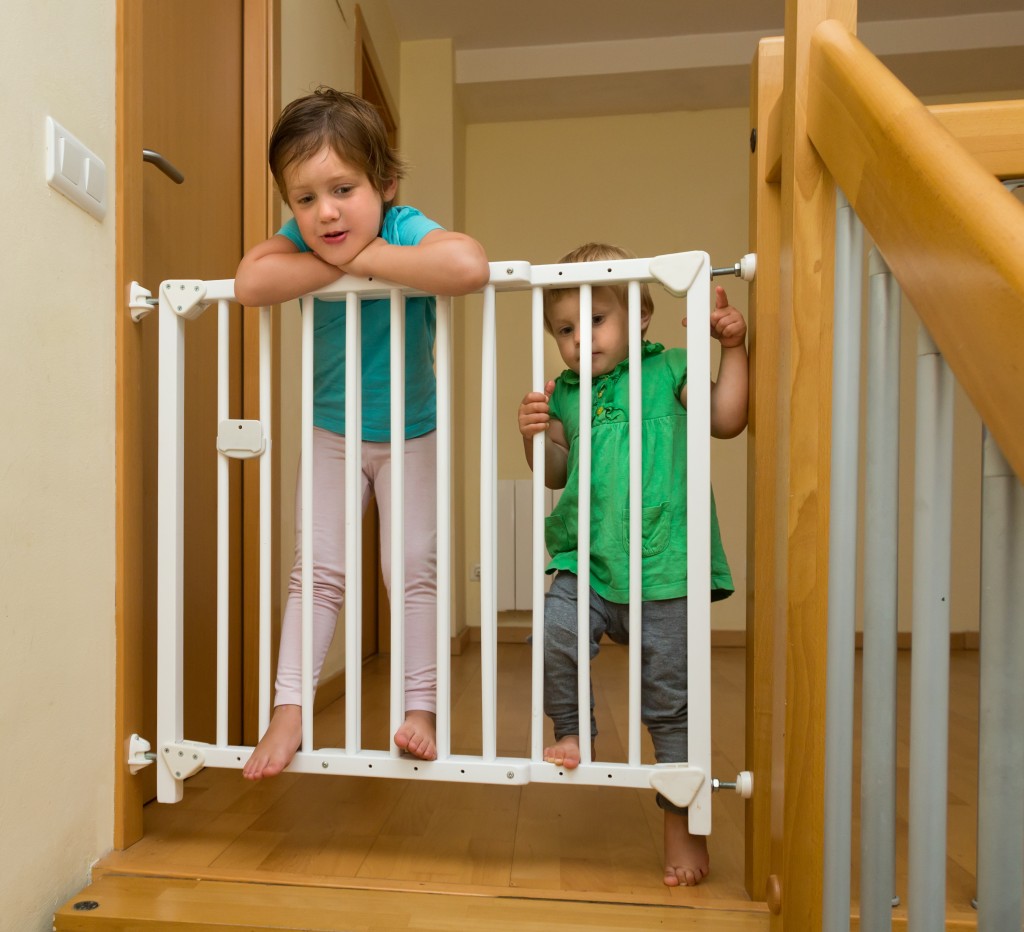Children are naturally curious. From the moment that they are born, kids want to explore the world around them using their rapidly developing senses. They move from crawling to walking and hardly stop there. If you have a youngster around the house, you’ll know they can reach areas even you barely touch.
This combination of reckless impulse and curious energy can get them into trouble. Years before they can take pilot training classes, a child might decide it’s a good idea to clamber onto the roof and fly paper planes from there.
In response, we childproof our homes. We purchase and install all sorts of protection to make sure that our kids run into barriers whenever they try to do or interact with something off-limits.
But even well-intentioned measures can be taken to excess. Over-parenting can harm children. How do you find the right balance between keeping your kids safe and letting them explore their environment?
The case for childproofing
Every year, roughly 2 million children are involved in accidents around the home, resulting in injuries and even fatalities. There are many potential hazards in and around the typical home. And while some of them, such as kitchen knives, pose easily identifiable dangers even to adults, others can be easily overlooked.
Adults behave differently. We’re far more predictable and controlled as we go about our daily routines. And we’re bigger; things around the house are designed for adult-sized individuals.
You’re not likely to hit your head on the edge of a table. And even if you do, you probably wouldn’t have been running around at full speed while playing hide-and-seek. You’re less likely to do random, nonsensical activities, or get injured while doing so.
Thus, childproofing is simply a measure of safety against common home design flaws. We need to cover electrical outlets because those were designed under the assumption that people wouldn’t even try to stick their fingers, or other objects, inside. Medicine cabinets need to be locked because there’s a similar assumption that you know what you’re taking.
Risks of fear and convenience
 Parents would do anything to secure a bright future for their kids. Thus, it only makes sense to take small, relatively inexpensive precautions to prevent potentially severe injuries at home.
Parents would do anything to secure a bright future for their kids. Thus, it only makes sense to take small, relatively inexpensive precautions to prevent potentially severe injuries at home.
However, the desire to protect can be rooted in fear. And it can also overlap with, and be influenced by, the desire for convenience. When these factors blur the boundaries, it can be challenging to know what’s best for you and your child.
How much childproofing do you need to prevent common accidents, as opposed to having someone watch over the kids more often? In traditional societies, and even in many homes before residential electricity and the appliances it spawned, free-range child-rearing was the norm.
Today, many families have moved away from that model. Parents are often on their own, able to call on the extended family for limited support at best. Even when two parents are involved, both usually have full-time jobs. Childcare is expensive. It’s hard to have a set of eyes watching your kid continually.
Parents facing these problems can’t simply ignore them. But it’s easy to see how you might subconsciously allow fear and convenience to govern your decision-making. And if that tendency is left unchecked, it can slide further into over-parenting territory, with all the adverse effects that entails.
Finding a successful compromise
Every family has its own unique set of circumstances. There won’t be any one-size-fits-all solution to these issues. If you’re able to afford a sitter or have a family member come over, you can be less anxious while meeting the demands of parenthood and a busy schedule.
However, for those who don’t have that option, an alternative approach would be to home-proof your child. The concept is simple; instead of making changes to your home that make it safe for children, you have to teach your child limitations and boundaries. Over time, they will understand the reason for those restrictions; they can demonstrate safe behavior, and you can gradually ease the rules.
Home-proofing is an excellent alternative because it teaches children. Rather than imposing physical barriers, it encourages behaviors. But it still might not be a practical solution for all parents, because it takes time and rigor to foster that sort of discipline.
Ultimately, only you can decide what works best for your family. But hopefully, a compromise of methods will help. You can install basic childproofing features to cover the most dangerous hazards, involve family or childcare for extended absences, and slowly teach your child to behave around objects and property. With this balance, you can avoid over-parenting while achieving the result everyone desires: a safe, enjoyable, and confidence-building childhood.


